Implementation of the EU Quality Policy: Case Study, Slovakia
Abstract
:1. Introduction
- Protected designation of origin (PDO)
- Protected geographical indication (PGI)
- Traditional specialty guaranteed (TSG).
1.1. Quality Policy Implementation in Slovakia
The Implementation Instruments in Slovakia
- Law No. 195 from 20th March 2007 amending and adjusting the Law of the National Council of the Slovak Republic 152/1995 on Foodstuffs as amended (Act No 195/2007 Coll. applicable from 1 May 2007) [15].
- Law No. 469/2003 on Designations of Origin and Geographical Indications of Products and on Amendments to Certain Acts. It was amended 3 times: in March 2007, July 2007 and November 2009 [16].
- Statute of the Commission of the Ministry of Agriculture and Rural Development of the Slovak Republic (hereinafter referred to as “the Ministry”) for the assessment of applications for registration of protected designations (protected designation of origin, protected geographical indication, traditional specialty guaranteed) of agricultural products, foodstuffs, spirits and objections to them No. 2735/2013—820. The last time the Statute was updated was in June 2013 [17].
1.2. Current Status of the Policy Measure
- 2 PDO—Protected Designation of Origin
- 10 PGI—Protected Geographical Indication (+1 published + 1 applied)
1.3. Background of the Policy Measure
1.4. National Registrations of Agriculture and Food Products
- Quality label SK/Quality label SK GOLD
- Quality from our Regions
- Traditional regional product
1.5. Effectiveness of the Policy Measure
2. Study Area and Research Methodology
2.1. Study Area
- Need to elaborate a long-term vision for the development and stability of rural areas and agriculture with the aim to restore self-sufficiency, including increasing transparency of direct payments for farmers and rural development program projects and special attention and support given to young, family and small farmers.
- Need to have sustainable settlements, regions and landscape in the context of climate change, specifically improving access to drinking water, sewerage and clean resources available, sustainable urban development, preventing climate change and protecting terrestrial life.
- Need to improve quality of public services, for example, create and support tele-working opportunities, improve the mobility possibilities to the main city and the connections between rural and urban areas, increase good medical (primary attention) services and adequate public support for the provision of e-health, e-daycare and/or e-learning services, simplify the rules for direct sales of products from farms and restore local market halls and places.
2.2. Survey Methodology and Data Collection
2.3. Evaluation Matrix
- (0)
- Needs
- (1)
- Objectives
- (2)
- Inputs/actions
- (3)
- Outputs
- (4)
- Outcomes
- (5)
- Impacts
- (a)
- External influencing factors
- (b)
- External policy factors
- Description about the information required
- Tools and references that can be used to get this information (documents, surveys, interviews, focus groups, etc.)
- Suggested questions that can be asked to obtain the required information
- (I)
- Effectiveness
- (II)
- Relevance
- (III)
- Coherence
- Description of the evaluation criteria
- Tools that can be used to make the evaluation
- Evaluation questions
3. Results and Discussions
3.1. Awareness of the Policy Measure
3.2. Relevance of the Policy Measure
3.3. Coherence of the Policy Measure
3.4. Intentions Explained to Policymakers
3.5. Statistical Assessment of Obtained Data
| QUEST.ITEM_01 | - | 1. To what extent does the EU Quality Policy achieve its aim to protect Slovak agricultural and food products? |
| QUEST.ITEM_02 | - | 2. To what extent do the external factors (political, economic, environmental, social, technological) contribute to achieving the goals of the EU Quality Policy? |
| QUEST.ITEM_03 | - | 3. What are the key success criteria for achieving the goals of the EU Quality Policy in Slovakia? |
| QUEST.ITEM_04 | - | 4. What are the key constraints for the implementation of the EU Quality Policy in Slovakia? |
| QUEST.ITEM_05 | - | 5. To what extent does the implementation of the EU Quality Policy reflect the needs in Slovakia? |
| QUEST.ITEM_06 | - | 6. To what extent did the EU Quality Policy contribute to rural development in Slovakia? |
| QUEST.ITEM_07 | - | 7. To what extent is the EU Quality Policy relevant for Slovakia? |
| QUEST.ITEM_08 | - | 8. To what extent is the EU Quality Policy coherent in its goals and measures? |
| QUEST.ITEM_09 | - | 9. To what extent is the EU Quality Policy in line with other similar policies in Slovakia? |
| QUEST.ITEM_10 | - | 10. To what extent is the EU Quality Policy incorporated into other programs and policies dedicated to rural areas? |
| QUEST.ITEM_11 | - | 11. To what extent is the EU Quality policy connected with other local, regional and national policies and programs? |
| QUEST.ITEM_12 | - | 12. To what extent is the EU Quality Policy in line with other EU policies (Common Agricultural Policy, LEADER, REGIO, CONNECT, etc.)? |
| QUEST.ITEM_13 | - | 13. To what extent has the implementation of the EU Quality Policy supported the sale of registered agro-food products? |
| QUEST.ITEM_14 | - | 14. To what extent is the information on EU Quality Policy in Slovakia spread? |
| QUEST.ITEM_15 | - | 15. To what extent is the availability of information on the registration processes within the EU Quality Policy? |
| QUEST.ITEM_16 | - | 16. To what extent are registered products within EU Quality Policy promoted? |
3.6. Recommendations
- Increased effort in the area of promoting the EU Quality Policy is needed in Slovakia. This requires a more proactive attitude of the responsible MofAR of the Slovak Republic by kick-starting the drafting process of a National Marketing Strategy prepared in a broad consultation process with relevant stakeholders and actors. This could be one of the tools to start the public discussion on this issue and also positively contribute to raising awareness on EU Quality Policy in Slovakia. This strategy can address important issues already identified by stakeholders, such as very strict national legislation for the implementation of the EU legislation, and find many others that need to be addressed. The national legislation should reflect the specific interests and requirements of local entrepreneurs and set very simple and clear rules, avoiding complicating their life too much, but instead finding ways to make them as simple as possible and less demanding. Local conditions and needs need to be reflected when adapting the European legislation to the Slovak perspective and thus avoid any harm or hardship for domestic producers. It should include regular information campaigns on the explaining the EU Quality Policy and difference from other similar policies, organizing regular events focused on the presentation of the aims of the EU Quality Policy and the contribution it can have to protecting, safeguarding and promoting the production of local domestic products not only on the national but also on European and global levels. Successful implementation of the marketing strategy requires the allocation of adequate financial resources to support it. The financial contribution should be continuous and not a single case or option. This could be one of the factors positively influencing the interest and motivation of producers to get involved and start the registration process.
- There is a need to support and help producers to market their protected products better. In order to better promote the products already holding the registration requires the involvement of all actors, at all production levels from farm to table. A useful tool could be the common crafting of the National Plan for the promotion of the products holding the registrations. The registered products should be used also officially by public institutions and authorities as part of national honour and pride. This could generate more interest from producers and their organizations to apply for the various registrations.
- Protected products require specific recognition and work with consumers to inform them that these are quality products that they can trust and learn to distinguish them from others. Special promotion campaigns dedicated to PDOs, PGIs and TSGs are necessary to be introduced. They can be prepared and implemented in joint collaboration with the Ministry and associations involved.Promotion campaigns should include information on the quality of raw material and ingredients used for the production of registered foodstuffs to distinguish them from the others and the prices the consumers will have to pay for them, which are usually higher than other similar products. The positive impact on human health and the environment should be highlighted. The closer the food products are produced to the consumer, the lower is the impact on the environment since transportation and handling are limited. Slovak consumers need to be better informed to make the right shopping choices and establish regular shopping habits. The EU Quality Policy creates a legal framework for support and protection of original and traditional food products of quality and at the same time safeguarding traditions and culture of the given region. It can also have a positive effect on stimulating the local and regional agricultural and food production. These products are more attractive and interesting for consumers and provide a higher guarantee of food safety since they are controlled more deeply by authorized public control authorities. This creates an added value for these agricultural and food products.
- Special focus needs to be dedicated to the PDOs since there are only two at the moment holding the registration, which is quite low in comparison with neighboring and other EU countries. Both of them were registered some time ago, the first one in 2014 and the second one in 2017. PDOs contribute the most to local production since there is a close production cycle in a certain territory.
- Establish communication and regular contact with other EU countries in order to exchange experiences, views and obstacles hindering the implementation of the EU Quality Policy and finding jointly ways how to overcome them.
- Establish a regular channel of communication with all relevant stakeholders and actors via a specific platform or network, which is open, active and effective.
- Explore the possible ways of reducing the time needed for obtaining the registration since the current span of 2–3 years, sometimes even 4 years, which might significantly contribute to decreasing the attractiveness of the EU Quality Policy for producers and their associations.
- Generally, higher support of domestic food producers from the public authorities is highly encouraged. It should move from the position of only control and sanction into exploring the possible ways for more support.
4. Conclusions
Author Contributions
Funding
Institutional Review Board Statement
Informed Consent Statement
Data Availability Statement
Conflicts of Interest
References
- EC. European Commission Seeks Feedback on Promotion Policy for Agri-Food Products; European Commission (EC): Brussels, Belgium, 2020. [Google Scholar]
- Clark, J.K.; Sharp, J.S.; Dugan, K.L. The agrifood system policy agenda and research domain. J. Rural Stud. 2015, 42, 112–122. [Google Scholar] [CrossRef]
- Becker, T.C.; Staus, A. European food quality policy: The importance of geographical indications, organic certification and food quality insurance schemes in European countries. J. Int. Trade Law Policy 2009, 10, 111–130. [Google Scholar]
- European Council Regulation. EEC No 2081/92 of 14 July 1992 on the protection of geographical indications and designations of origin for agricultural products and foodstuffs. Off. J. Eur. Union L 1992, 208, 1–8. [Google Scholar]
- Moschini, G.; Menapace, L.; Pick, D. Geographical indications and the competitive provision of quality in agricultural markets. Am. J. Agric. Econ. 2008, 90, 794–812. [Google Scholar] [CrossRef] [Green Version]
- Belletti, G.; Marescotti, A.; Touzard, J.M. Geographical indications, public goods, and sustainable development: The roles of actors’ strategies and public policies. World Dev. 2017, 98, 45–57. [Google Scholar] [CrossRef]
- BSI. Quality Management and Quality Assurance ± Vocabulary; BS EN ISO 8402 (formerly BS 4778: Part 1, 1987/ISO 8402, 1986); British Standards Institution: London, UK, 1995. [Google Scholar]
- Casabianca, F.; Matassino, D. Local resources and typical animal products. In Livestock Farming Systems. Product Quality Based on Local Resources Leading to Improved Sustainability, 1st ed.; Rubino, R., Sepe, L., Dimitriadou, A., Gibon, A., Eds.; Wageningen Academic Publishers: Wageningen, The Netherlands, 2006; pp. 9–26. [Google Scholar]
- Nardone, A.; Valfrè, F. Effects of changing production methods on quality of meat, milk and eggs. In Proceedings of the 8th World Conference on Animal Production, Special Symposium and Plenary Sessions, Seoul, Korea, 28 June–4 July 1998; pp. 246–264. [Google Scholar]
- Tornberg, E. Biophysical aspects of meat tenderness. Meat Sci. 1996, 43, 175–191. [Google Scholar] [CrossRef]
- Arfini, F.; Bellassen, V. Sustainability of European Food Quality Schemes. In Multi-Performance, Structure, and Governance of PDO, PGI, and Organic Agri-Food Systems; Springer International Publishing: Cham, Switzerland, 2019; 567p. [Google Scholar]
- UN. Transforming our World: The 2030 Agenda for Sustainable Development. 2015. Available online: https://sustainabledevelopment.un.org/content/documents/21252030%20Agenda%20for%20Sustainable%20Development%20web.pdf (accessed on 16 April 2021).
- Updated Bioeconomy Stratedy. In A Sustainable Bio-Economy for Europe: Strengthening the Connection between Economy, Society and the Environment; European Commsions: Brussels, Belgium, 2018; ISBN 978-92-79-94145-0.
- EU Commission. Cork 2.0 Declaration, 2016. A Better Life in Rural Areas. 2016. Available online: https://www.arc2020.eu/wp-content/uploads/2016/09/cork-declaration-2-0_en.pdf (accessed on 16 April 2021).
- Act of the National Council of the Slovak Republic No. 152/1995 Coll., as Amended. Act No. 355/2007 Coll., as Amended. Available online: https://www.unms.sk/swift_data/source/aj_verzia/testing/264_EN_07_08_09.pdf (accessed on 31. March 2021).
- Act of the National Council of the Slovak Republic No. 469/2003 Coll. on Designations of Origin for Products and Geographical Indications for Products and on Amendment of Some Acts. Available online: https://www.indprop.gov.sk/swift_data/source/pdf/legislation/pravo_03469.pdf (accessed on 30 March 2021).
- Statute of the Commission of the Ministry of Agriculture and Rural Development of the Slovak Republic (Herein after Referred as “the Ministry”) for the Assessment of Applications for Registration of Protected Designations (Pro- tected Designation of Origin, Protected Geographical Indication, Traditional Specialty Guaranteed) of Agricultural Products, Foodstuffs, Spirits and Objections to Them No. 2735/2013–820. Available online: https://www.indprop.gov.sk/swift_data/source/images/novinky/2018/01/EUIPO_Geographical_Indications_full_report_en.pdf?fbclid=IwAR0pqCAhYpx_plwaWEUZJDktuWAxJ_xviwGjS4xeK_uSMQEFAImCcT_8iM8 (accessed on 16 April 2021).
- Supeková, S.; Honza, M.; Kačenová, D. Perception of Slovak foodstuffs designated by protected geographical indication by Slovak consumers. J. Food Nutr. Res. 2008, 47, 205–208. [Google Scholar]
- Official Journal of the European Union. Regulation (EU) No 1151/2012 of the European Parliament and of the Council of 21 November 2012 on quality schemes for agricultural products and foodstuffs. Off. J. Eur. Union 2012, 343, 1–29. [Google Scholar]
- Michaeli, E.; Solár, V.; Vilček, J.; Ivanová, M. Selected Specific Foods and Agricultural Products with Protected Designation in Regions of The Slovak Republic as a Member State of The European Union. J. Int. Sci. Publ. Ecol. Saf. 2018, 12, 335–340. [Google Scholar]
- European Commission. eAmbrosia—The EU Geographical Indications Register. 2020. Available online: https://ec.europa.eu/info/food-farming-fisheries/food-safety-and-quality/certification/quality-labels/geographical-indications-register/ (accessed on 6 November 2020).
- Košičiarová, I.; Nagyová, Ľ.; Holienčinová, M.; Rybanská, J. Quality Label as the Guarantee of Higher Quality of Food–A Case Study of Slovak Food Market. Procedia Soc. Behav. Sci. 2016, 220, 200–209. [Google Scholar] [CrossRef] [Green Version]
- Jaďuďová, J.; Badida, M.; Badidová, A.; Marková, I.; Ťahúňová, M.; Hroncová, E. Consumer behavior towards regional eco-labels in Slovakia. Sustainability 2020, 12, 5146. [Google Scholar] [CrossRef]
- Jarossová, M.A. Sales promotion of Slovak food on the Slovak market. Nauk. Inżynierskie Technol. 2017, 4, 23–40. [Google Scholar]
- Melichová, K.; Varecha, L. Endogenous Political, Institutional, Cultural, and Geographic Determinants of Intermunicipal Cooperation—Evidence from Slovakia. Sustainability 2020, 12, 709. [Google Scholar] [CrossRef] [Green Version]
- Michalek, J.; Ciaian, P.; Pokrivcak, J. The impact of producer organizations on farm performance: The case study of large farms from Slovakia. Food Policy 2018, 75, 80–92. [Google Scholar] [CrossRef]
- Ulman, M.; Šimek, P.; Masner, J.; Kogut, P.; Löytty, T.; Crehan, P.; Charvát, K.; Oliva, A.; Bergheim, S.; Kalaš, M.; et al. Towards Future Oriented Collaborative Policy Development for Rural Areas and People. AGRIS On-Line Pap. Econ. Inform. 2020, 12, 111–124. [Google Scholar] [CrossRef] [Green Version]
- Workshop on Building the Vision from More Attractive Rural Areas–PoliRURAL. Available online: https://polirural.eu/2021/03/05/workshop-on-building-the-vision-from-more-attractive-rural-areas/ (accessed on 10 January 2021).
- Halama, P. Principles of Psychological Diagnosis; University of Trnava, Faculty of Philosophy: Tranava, Slovakia, 2011. [Google Scholar]
- Cohen, J. Statistical Power Analysis for the Behavioral Sciences, 2nd ed.; Lawrence Erlbaum Associates: Hillsdale, NJ, USA, 1998. [Google Scholar]
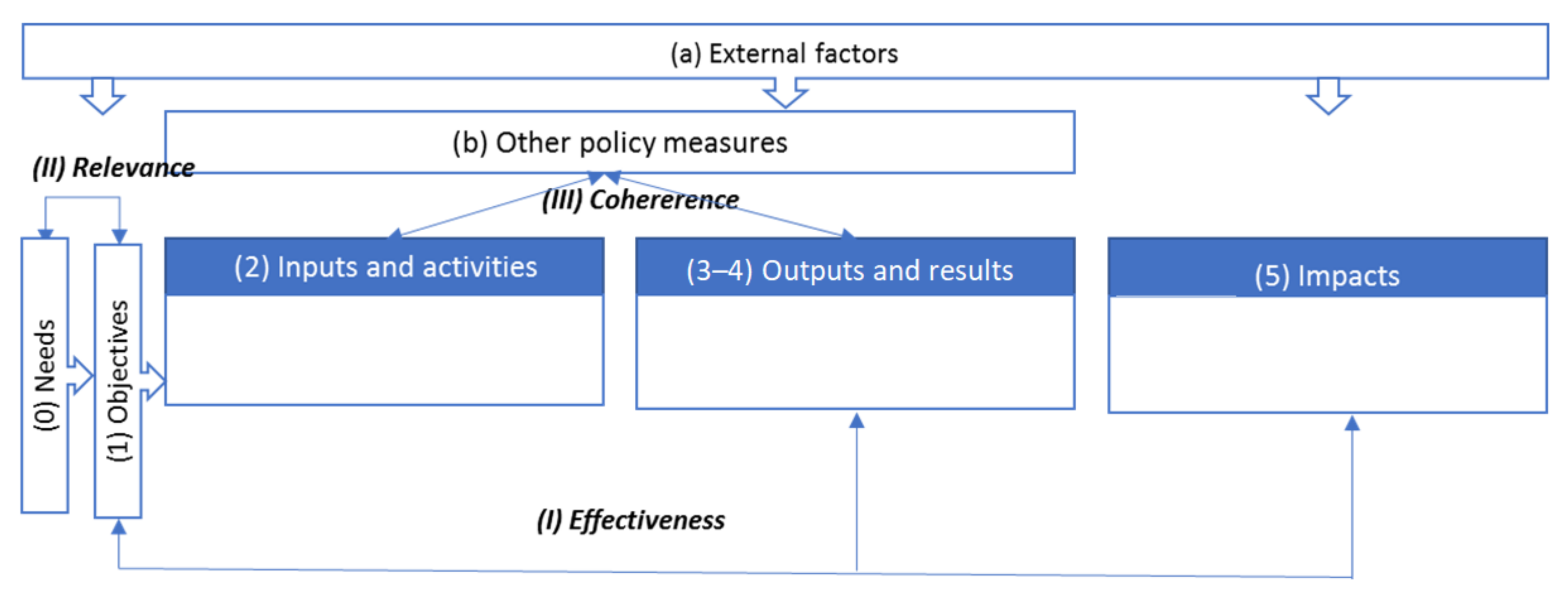

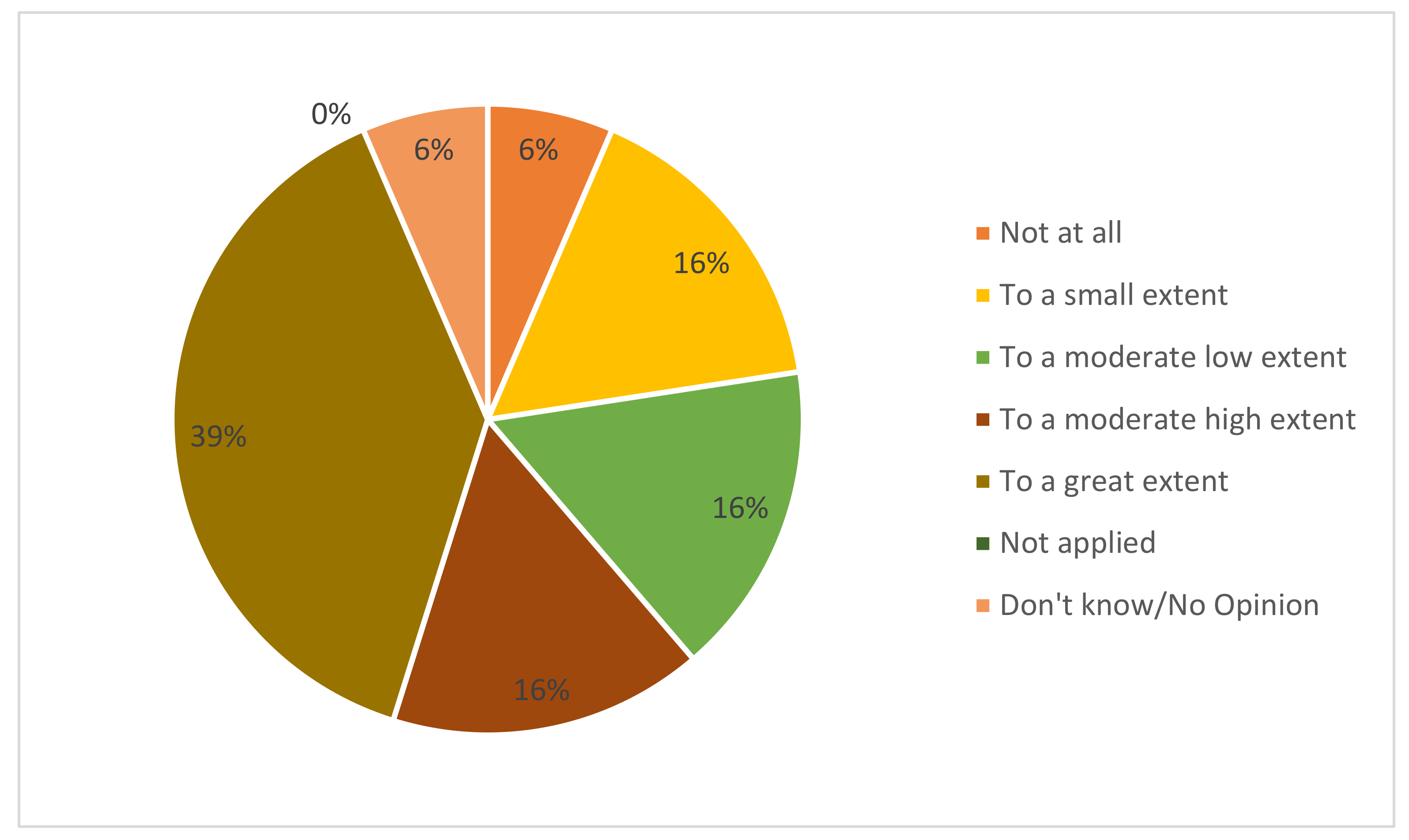
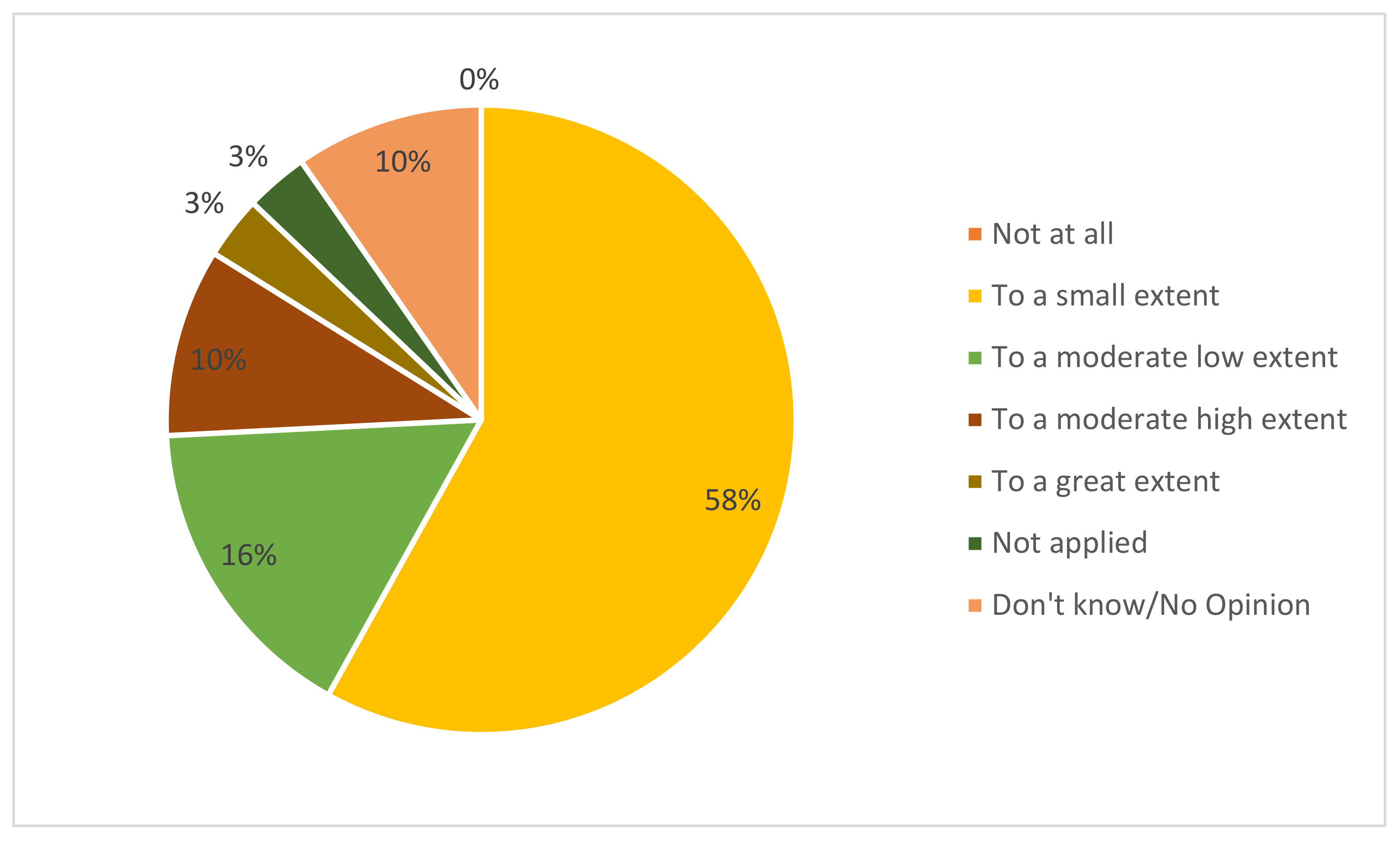
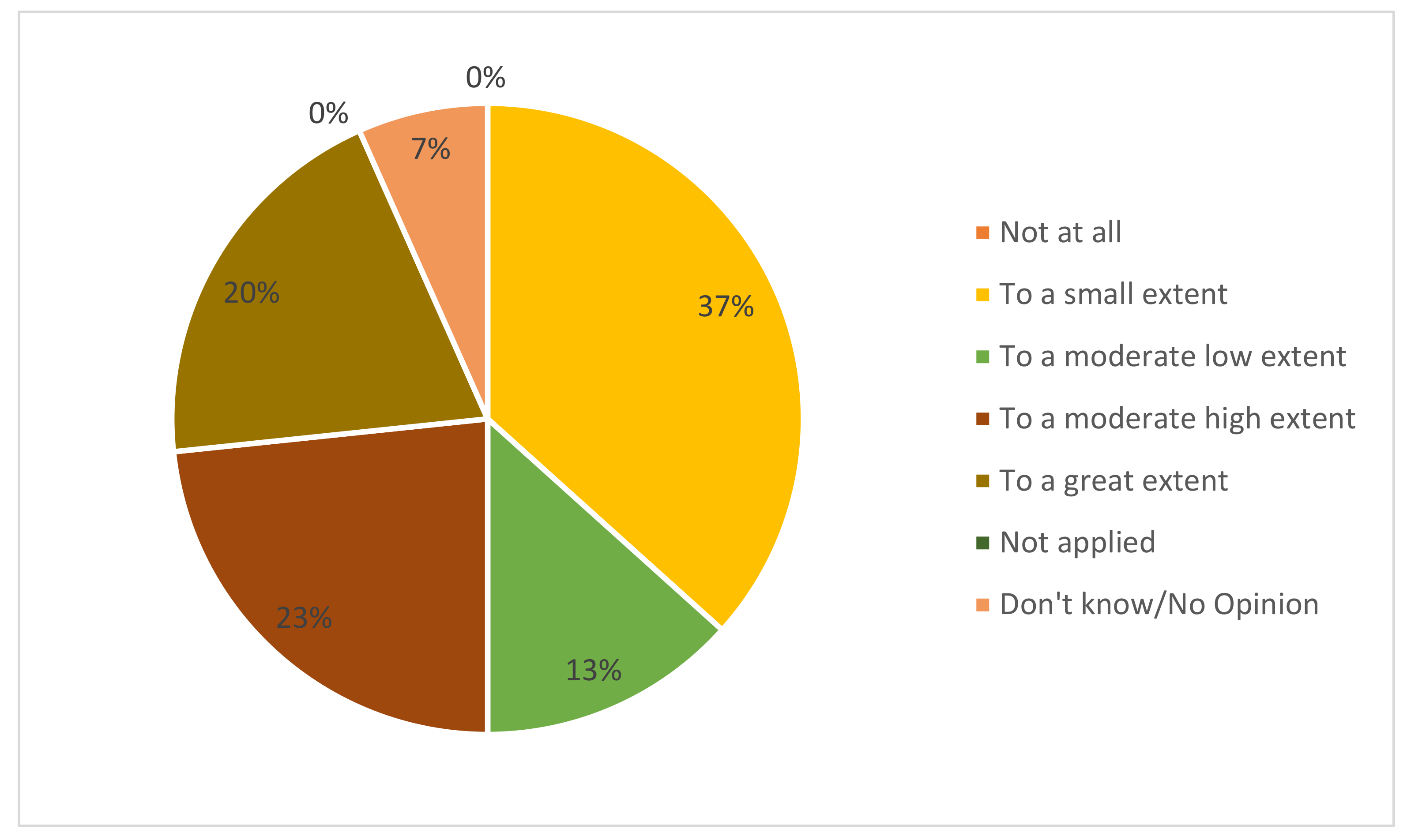


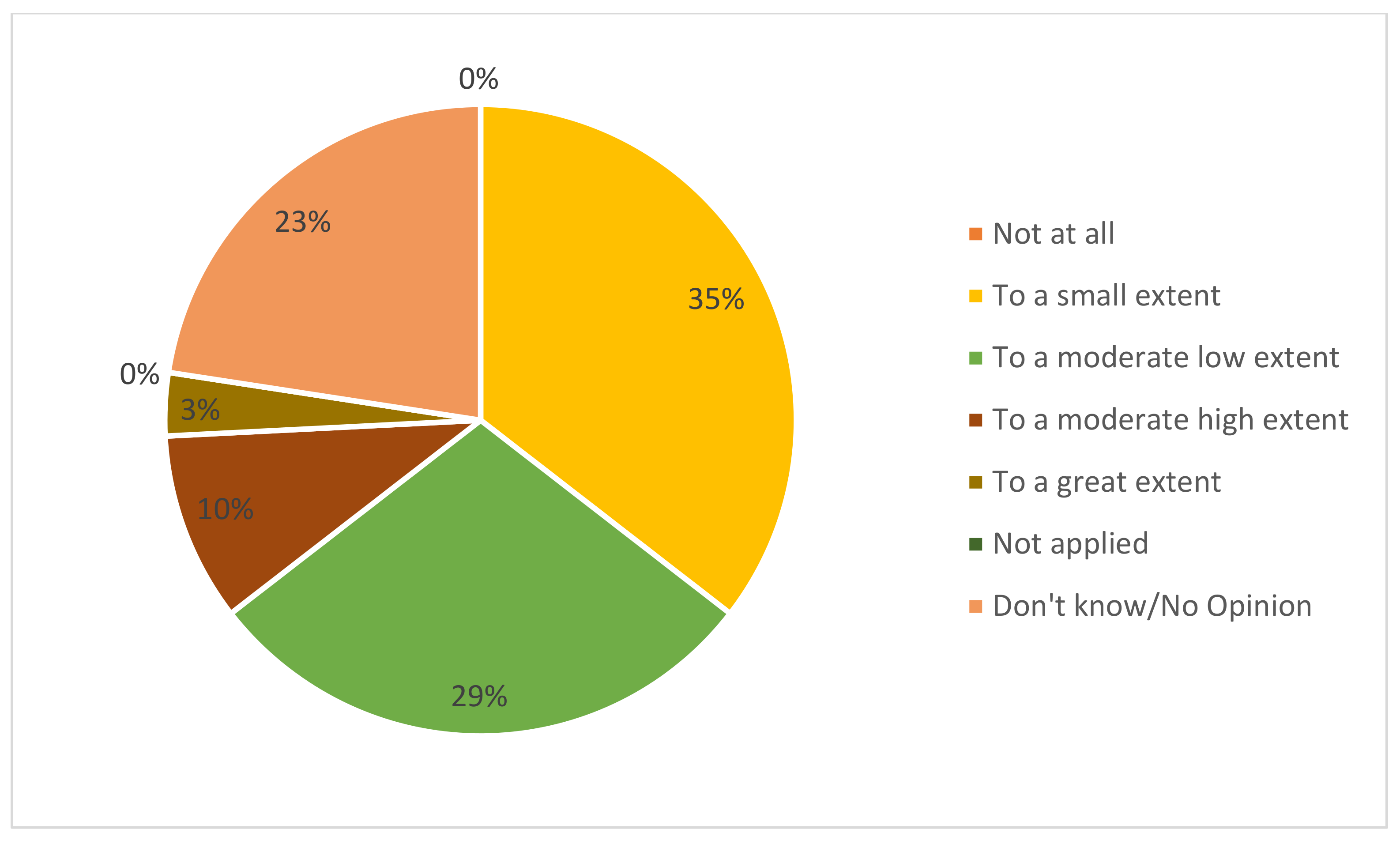



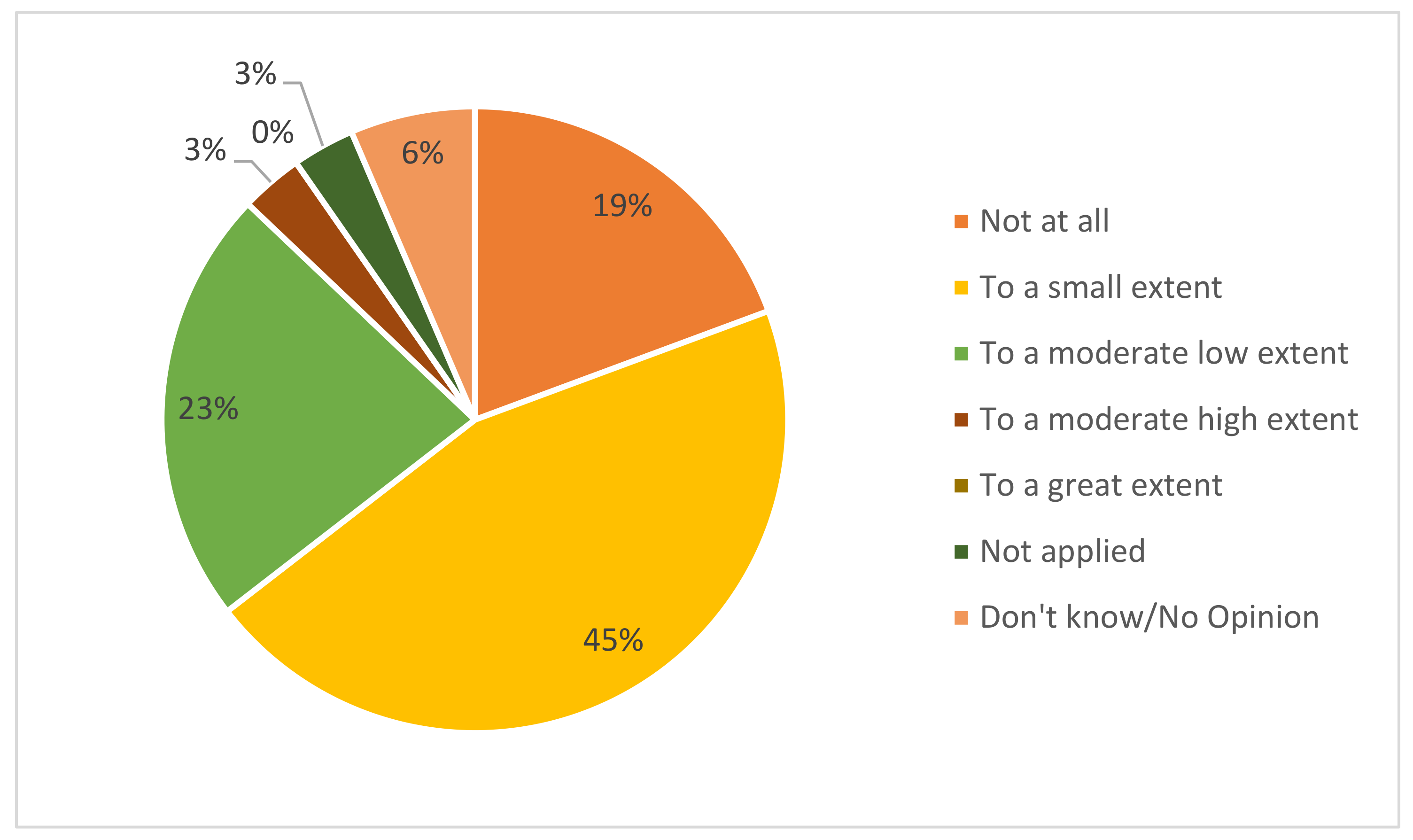


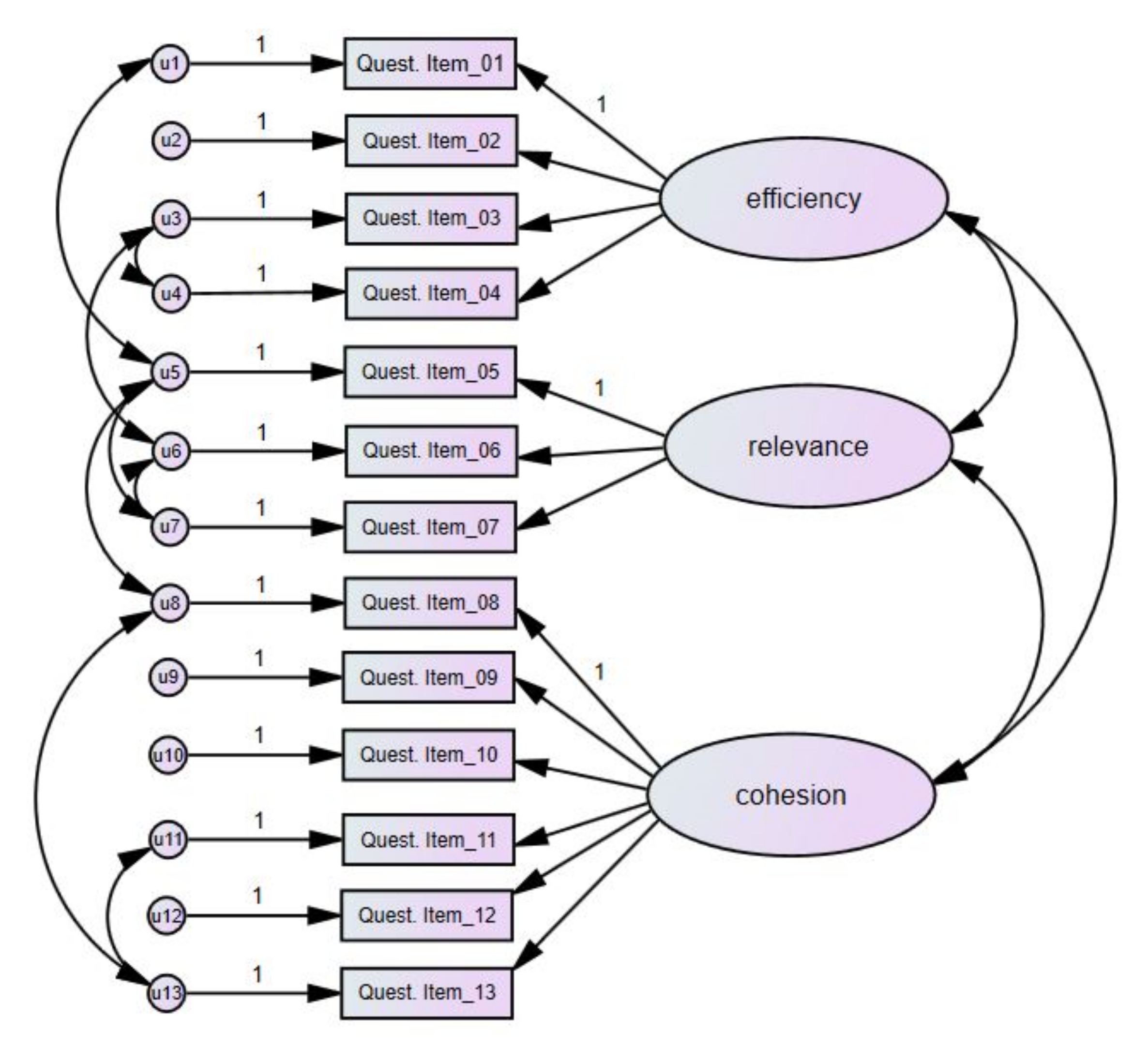
| Product Name and Type of Registration | Submitted in Slovakia | Applied to the EC | Publication Date in Official Journal | Current Situation—Registration Day in the Register Kept by the EC | Name and Place of Association |
|---|---|---|---|---|---|
| Skalický trdelník PGI | 2 August 2005 | 18 August 2005 | 21 April 2007 2007/C88/02 | 14 December 2007 PGI—2007/L330/130 | Skalický trdelník Skalica |
| Slovenská bryndza PGI | 27 April 2004 | 22 September 2004 | 4 October 2007 2007/C323/10 | 16 July 2008 PGI—2008/L189/19 | Cech bryndziarov Považská Bystrica |
| Slovenský oštiepok PGI (on the basis of Lisabon Agreement) | 22 November 1967 | 30 March 2007 | 19 December 2007 2007/C308/10 | 25 September 2008 Agreement with Poland. | Slovenský mliekarenský zväz Bratislava |
| Slovenská parenica PGI | 23 June 2005 | 19 July 2005 | 24 October 2007 2007/C249/13 | 10 July 2008 PGI—2008/L183/15 | Cech bryndziarov Považská Bystrica |
| Oravský korbáčik PGI | 30 October 2007 | 13 July 2010 2010/C188/10 | 11 March 2011 PGI—2011/L 66/19 | Združenie zázrivských korbáčikárov Zázrivá | |
| Zázrivský korbáčik PGI | 30 October 2007 | 13 July 2010 2010/C188/11 | 11 March 2011 PGI—2011/L66/9 | Združenie zázrivských korbáčikárov Zázrivá | |
| Tekovský salámový syr PGI | 14 April 2008 | 24 July 2010 2010/C202/05 | 11 March 2011 PGI—2011/ L 66/11 | Levické mliekarne a.s. Levice | |
| Klenovecký syrec PGI | 11 November 2010 | 22 June 2012 | 15 August 2014 | 6 January 2015 PGI—2015/L8/2 | Cech bryndziarov Považská Bystrica |
| Zázrivskévojky PGI | 28 October 2011 | 13 August 2012 | 11 April 2014 | 29 August 2014 PGI—2014/L271/15 | Združenie Zázrivských korbáčikárov Zázrivá |
| „Paprika žitava “/„Žitavská paprika” PDO | 5 January 2012 | 10 August 2012 | 11 February 2014 | 5 Februry 2014 PDO—2014/L40/12 | „Capsicum“- Združenie šľachtiteľov, pestovateľov a spracovateľov koreninovej papriky, Močenok |
| Levický slad PGI | 18 February 2013 | 20 November 2013 | 28 April 2016 | 27 April 2016 PGI | OSIVO a.s. Zvolen |
| Stupavské zelé PDO | 14 June 2013 | 26 October 2015 | 26 October 2015 | 26 April 2017 PDO | Mestský potravinový spolok v Stupave Stupava |
| Liptovské droby PGI | 17 February 2017 | 31 October 2017 | Request for registration presented to the EC on 31 October 2017 | Občianske združenie Liptovské droby | |
| Hrušovský lepník PGI | 4 January 2018 | 8 June 2018 | Request for registration presented to the EC on 8 June 2008 | Občianske združenie Cesta hrušovských obyčají, Hrušov |
| Country | PDO | PGI | TSG |
|---|---|---|---|
| Austria | 11 | 7 | 3 |
| Bulgaria | 1 | 2 | 5 |
| Croatia | 18 | 22 | - |
| Cyprus | 2 | 7 | - |
| Czechia | 6 | 25 | 4 |
| France | 105 | 157 | 2 |
| Germany | 17 | 90 | - |
| Greece | 80 | 36 | 1 |
| Hungary | 9 | 22 | 3 |
| Ireland | 4 | 7 | - |
| Italy | 188 | 147 | 5 |
| Poland | 8 | 24 | 10 |
| Romania | 1 | 8 | 1 |
| Slovakia | 2 | 10 | 7 |
| Slovenia | 9 | 13 | 4 |
| Year of Registration | PDOs/PGIs | Number of Registered Products |
|---|---|---|
| 2007 | PGI | 4 |
| 2010 | PGI | 3 |
| 2014 | PGI PDO | 2 1 |
| 2015 | PDO | 1 |
| 2016 | PGI | 1 |
| Ongoing | PGI | 2 |
| Variable | Summary for Scale: Mean = 51.8064 Std.Dv. = 15.3328 Valid N:31 (CFA) Cronbach Alpha: 0.835592 Standardized Alpha: 0.849214 Average Inter-Item Corr.: 0.270620 | ||||
|---|---|---|---|---|---|
| Mean If Deleted | Var. If Deleted | StDv. If Deleted | Itm-Totl Correl. | Alpha If Deleted | |
| Quest. Item_01 | 49.16129 | 206.0708 | 14.35516 | 0.483041 | 0.825421 |
| Quest. Item_02 | 47.90322 | 210.0874 | 14.49439 | 0.339625 | 0.832035 |
| Quest. Item_03 | 49.06452 | 205.0281 | 14.3188 | 0.407325 | 0.828694 |
| Quest. Item_04 | 47.83871 | 216.5224 | 14.7147 | 0.071141 | 0.856749 |
| Quest. Item_05 | 48.74194 | 196.385 | 14.01374 | 0.625384 | 0.816944 |
| Quest. Item_06 | 49 | 202.7742 | 14.23988 | 0.570818 | 0.821378 |
| Quest. Item_07 | 48.32258 | 215.7669 | 14.68901 | 0.220106 | 0.837541 |
| Quest. Item_08 | 47.93548 | 191.0281 | 13.82129 | 0.545462 | 0.820231 |
| Quest. Item_09 | 48.09678 | 197.4422 | 14.05141 | 0.488649 | 0.823999 |
| Quest. Item_10 | 48.48387 | 210.8949 | 14.52222 | 0.221881 | 0.840829 |
| Quest. Item_11 | 48.54839 | 193.8606 | 13.92338 | 0.616042 | 0.816494 |
| Quest. Item_12 | 48 | 198.6452 | 14.09415 | 0.453558 | 0.826272 |
| Quest. Item_13 | 48.3871 | 193.076 | 13.89518 | 0.650784 | 0.814673 |
| Quest. Item_14 | 49.25806 | 196.1915 | 14.00684 | 0.670168 | 0.81525 |
| Quest. Item_15 | 49.09678 | 204.2164 | 14.29043 | 0.464294 | 0.825775 |
| Quest. Item_16 | 49.25806 | 196.4495 | 14.01605 | 0.643532 | 0.81629 |
| Indicator | Value | |
|---|---|---|
| Kaiser–Meyer–Olkin Measure of Sampling Adequacy. | 0.816 | |
| Bartlett’s Test of Sphericity | Approx. chi-Square | 218.810 |
| df—degrees of freedom | 120 | |
| Sig. | 0.000 | |
| Relationship | Estimate | Std.Estimate | S.E. | C.R. | p | ||
|---|---|---|---|---|---|---|---|
| Quest.Item_01 | <--- | efficiency | 1 | 0.528 | 0.214 | 2.884 | 0.003 * |
| Quest.Item_02 | <--- | efficiency | 1.296 | 0.628 | 0.801 | 1.617 | 0.106 |
| Quest.Item_03 | <--- | efficiency | 0.871 | 0.392 | 0.635 | 1.372 | 0.17 |
| Quest.Item_04 | <--- | efficiency | −0.802 | −0.245 | 0.865 | −0.927 | 0.354 |
| Quest.Item_05 | <--- | relevance | 1 | 0.573 | 0.219 | 2.997 | 0.003 * |
| Quest.Item_06 | <--- | relevance | 0.635 | 0.599 | 0.268 | 2.371 | 0.018 * |
| Quest.Item_07 | <--- | relevance | 0.15 | 0.09 | 0.259 | 0.581 | 0.562 |
| Quest.Item_08 | <--- | cohesion | 1 | 0.783 | 0.242 | 3.675 | 0.002 * |
| Quest.Item_09 | <--- | cohesion | 0.856 | 0.727 | 0.239 | 3.585 | 0.001 * |
| Quest.Item_10 | <--- | cohesion | 0.349 | 0.288 | 0.227 | 1.537 | 0.124 |
| Quest.Item_11 | <--- | cohesion | 0.504 | 0.563 | 0.211 | 2.393 | 0.017 * |
| Quest.Item_12 | <--- | cohesion | 0.733 | 0.611 | 0.237 | 3.099 | 0.002 * |
| Quest.Item_13 | <--- | cohesion | 0.337 | 0.312 | 0.185 | 1.817 | 0.069 |
| Relationship | Estimate-Covariation | Estimate—Correlation | S.E. | C.R. | p | ||
|---|---|---|---|---|---|---|---|
| relevance | <--> | cohesion | 1.677 | 0.856 | 0.589 | 2.845 | 0.004 * |
| efficiency | <--> | relevance | 0.533 | 0.808 | 0.411 | 1.298 | 0.024 * |
| efficiency | <--> | cohesion | 0.228 | 0.188 | 0.331 | 0.687 | 0.042 * |
| u1 | <--> | u5 | 0.743 | 0.489 | 0.389 | 1.91 | 0.046 * |
| u3 | <--> | u4 | 1.738 | 0.486 | 0.738 | 2.355 | 0.019 * |
| u3 | <--> | u6 | 0.446 | 0.227 | 0.364 | 1.226 | 0.022 * |
| u5 | <--> | u7 | 0.223 | 0.119 | 0.263 | 0.849 | 0.046 * |
| u5 | <--> | u8 | −0.65 | −0.395 | 0.325 | −2.003 | 0.045 * |
| u6 | <--> | u7 | 0.438 | 0.23 | 0.331 | 1.323 | 0.016 * |
| u11 | <--> | u13 | 1.729 | 0.655 | 0.526 | 3.285 | 0.001 * |
| u8 | <--> | u13 | 1.06 | 0.488 | 0.437 | 2.427 | 0.015 * |
Publisher’s Note: MDPI stays neutral with regard to jurisdictional claims in published maps and institutional affiliations. |
© 2021 by the authors. Licensee MDPI, Basel, Switzerland. This article is an open access article distributed under the terms and conditions of the Creative Commons Attribution (CC BY) license (https://creativecommons.org/licenses/by/4.0/).
Share and Cite
Palková, Z.; Okenková, M.; Harničárová, M.; Valíček, J.; Gombár, M.; Dvorský, J.; Behanovská, M.; Slaninová, M.; Reiskupová, M.; Vnučko, P. Implementation of the EU Quality Policy: Case Study, Slovakia. Sustainability 2021, 13, 7073. https://0-doi-org.brum.beds.ac.uk/10.3390/su13137073
Palková Z, Okenková M, Harničárová M, Valíček J, Gombár M, Dvorský J, Behanovská M, Slaninová M, Reiskupová M, Vnučko P. Implementation of the EU Quality Policy: Case Study, Slovakia. Sustainability. 2021; 13(13):7073. https://0-doi-org.brum.beds.ac.uk/10.3390/su13137073
Chicago/Turabian StylePalková, Zuzana, Marieta Okenková, Marta Harničárová, Jan Valíček, Miroslav Gombár, Jakub Dvorský, Mária Behanovská, Monika Slaninová, Monika Reiskupová, and Peter Vnučko. 2021. "Implementation of the EU Quality Policy: Case Study, Slovakia" Sustainability 13, no. 13: 7073. https://0-doi-org.brum.beds.ac.uk/10.3390/su13137073






